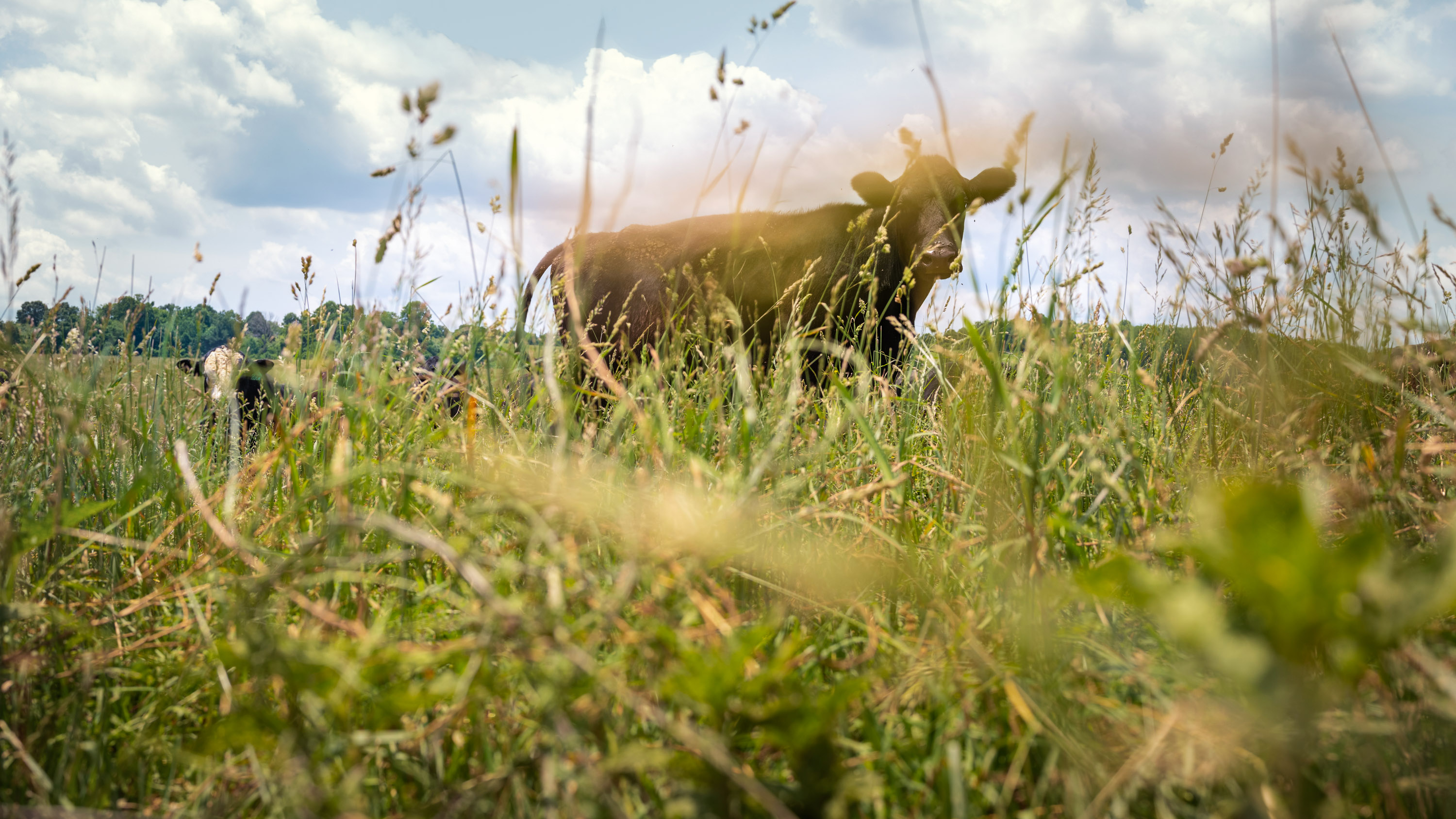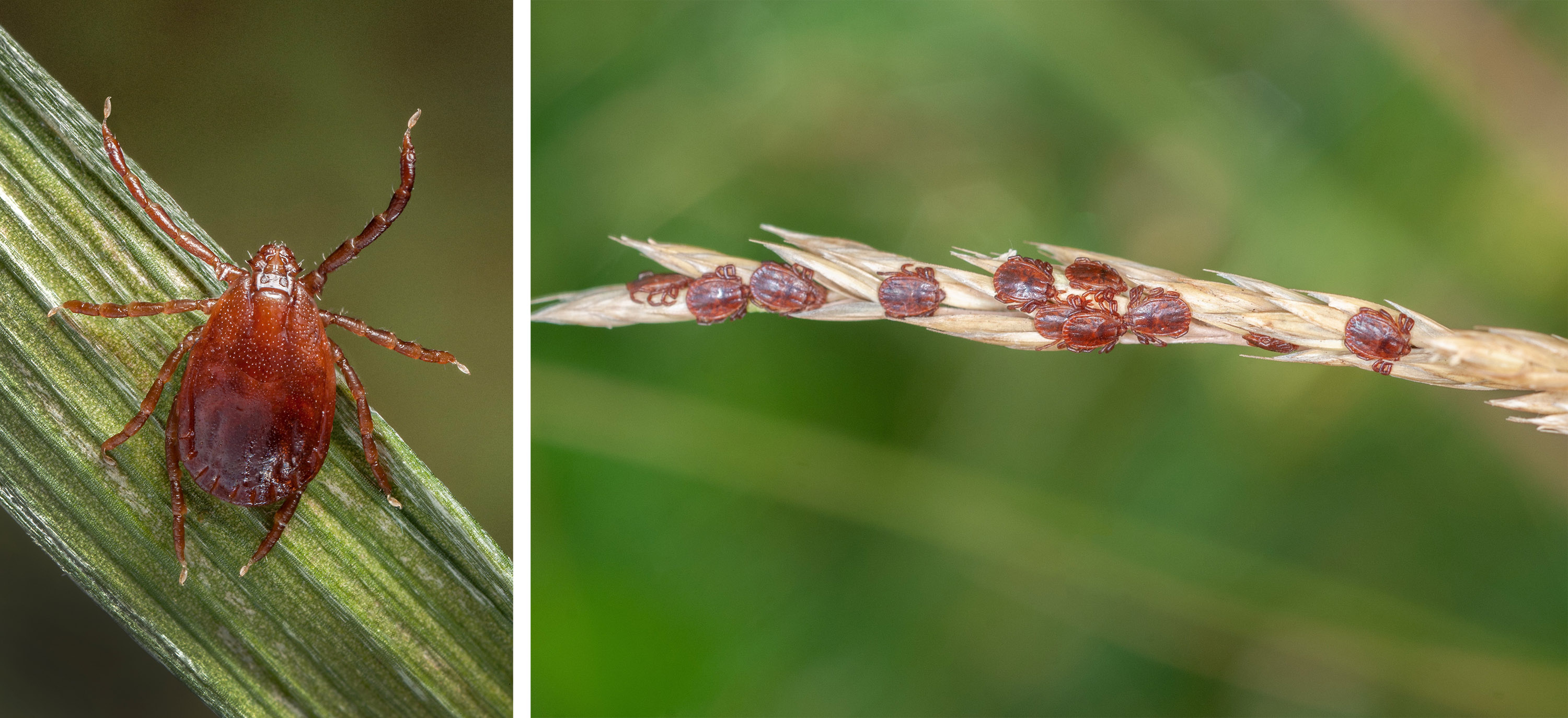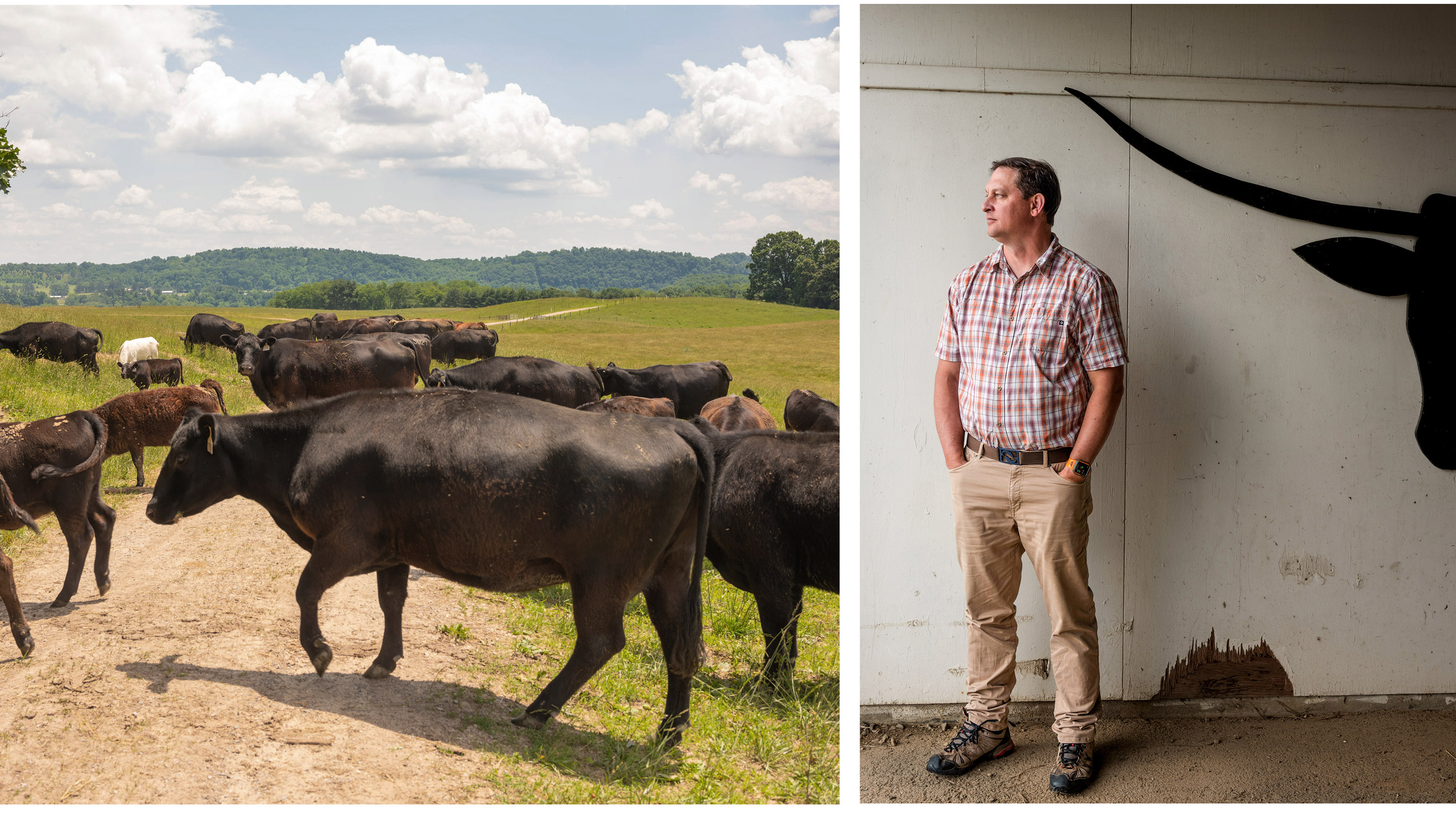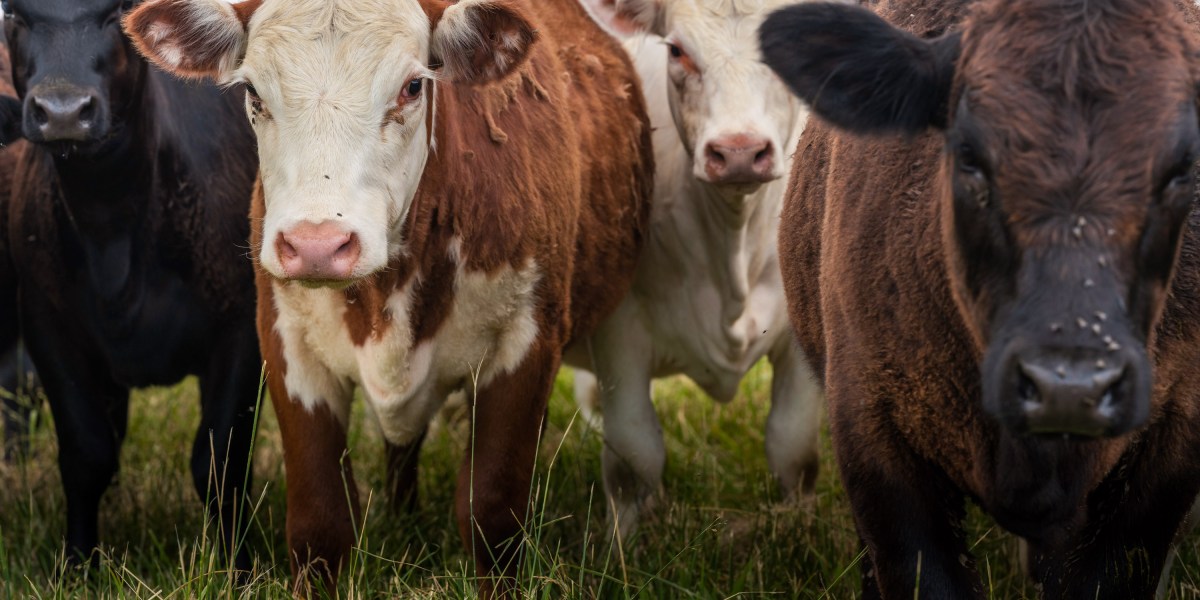A new tick-borne disease is killing cattle in the US
In the spring of 2021, Cynthia and John Grano, who own a cattle operation and sell performance horses in Culpeper County, Virginia, started noticing some of their cows slowing down and acting “spacey.” They figured the animals were suffering from anaplasmosis, a common infectious disease that causes anemia in cattle. But Melinda McCall, their veterinarian, had warned them that another disease carried by a parasite was spreading rapidly in the area.
After a third cow died, the Granos decided to test its blood. Sure enough, the test came back positive for the disease: theileria. And with no treatment available, the cows kept dying. In September, by which time the couple had already lost six cows and seven calves, Cynthia noticed a cow separated from the herd. She was walking up to it when it suddenly charged at her and knocked her over, breaking her shoulder blade. By that afternoon, the cow was dead.
Cattle owners like the Granos are not alone. Livestock producers around the country are confronting this new and unfamiliar disease—if they can detect it in their herds at all—without much information. Researchers still don’t know how theileria will unfold in the United States, even as it quickly spreads west across the country. If states can’t get the disease under control, then nationwide production losses from sick cows could significantly damage both individual operations and the entire industry.
Theileria, which is in the same family as malaria, is being transmitted largely through the Asian longhorned tick, an invasive species first discovered in the US in 2017. The tick is native to Korea, China, Russia, and Japan. As it has spread in the US, so has theileria; the disease has been found in cattle in West Virginia, North Carolina, Tennessee, Kentucky, Pennsylvania, and Kansas. Some sale barns in Virginia saw the prevalence of theileria increase from two to 20 percent in just two years.
Theileria can cause cows to abort their fetuses. It can also cause anemia so severe that a cow will die. In Australia, where the disease has been spreading since 2012 and now affects a quarter of the cattle, theileria costs the beef industry an estimated $19.6 million a year in reduced milk and meat yields, according to a 2021 paper. In Japan and Korea, the combined loss is an estimated $100 million annually. Kevin Lawrence, an associate professor at Massey University who studies theileria in New Zealand, says that country has managed to avoid abortions because 95 percent of cows calve in the spring there, the same season he’s seen theileria infecting cows. In the US, however, calving season can be year-round. “I think in America, you’re going to see abortions,” he says. “You’re going to see deaths.”
And yet, while the US livestock industry has acknowledged theileria’s presence and the threat it poses, it seems to want to blunt concern. In statements to MIT Technology Review, the National Cattlemen’s Beef Association, one of the largest cattle lobbying groups, said that occurrences of the disease remain rare in the United States. That contradicts the experience of McCall, the Granos’ veterinarian, who in 2020 encountered theileria in 40 of the Virginia farms she serves. “It’s going to cost a lot of economic loss for producers,” says McCall, “whether or not they know it.”

The US Department of Agriculture has funded cooperative agreements with the Virginia-Maryland College of Veterinary Medicine and the University of Georgia to better understand the distribution of the disease and the Asian longhorned tick, respectively. But some people, like McCall, say the agency hasn’t done enough. “We’re having a hard time getting the USDA to pay attention to this because they don’t believe it’s causing lots of problems,” McCall says. “And that’s like, ‘Wow, you have no idea how many problems it’s causing and how widespread it could be.’”
In a 2019 paper about monitoring the Asian longhorned tick, the USDA acknowledged it failed to contain the problem. “The original goal was to eradicate this tick species,” it says of its efforts. However, given the tick’s spread, that goal is “no longer feasible.” Now the agency and its partners appear to be playing a game of catch-up, to the frustration of researchers.
There is no national program in place to curb infestation. Denise Bonilla, the cattle fever tick program coordinator at the USDA, says the agency doesn’t have the funds to set up a framework around this specific issue. She says the agency has not fallen behind, but adds, “If you ask someone whose animals have died if [the effort to control theileria] is happening fast enough, they’ll probably tell you no.”
Vaccines and treatments for infection are still just items on a wishlist. Until they arewidely available, people in the field can only surveil and test, and even that process has been either lagging or nonexistent at times. Meanwhile the Asian longhorned tick continues to proliferate. If it starts spreading diseases to humans, as it does in other countries, the US could also have an alarming public health crisis on its hands.
It can be difficult to pinpoint when an invasive species makes landfall, but research scientist Andrea Egizi remembers when the Asian longhorned tick first crossed her radar. Egizi, who runs a tick-borne disease lab at Rutgers University, was sitting in a monthly meeting in 2017 with various state agency representatives. Tadhgh Rainey, the head of the mosquito and vector disease control division at the Hunterdon County Department of Health in New Jersey, mentioned that a local resident had shown him a sampling of the ticks that she had found on her pet sheep. She also unknowingly had thousands of ticks on her clothes; they looked like specks of dust. When Rainey inspected the ticks, he noticed the mouth parts were broader and the body more circular than other species: “far removed from anything I’d ever seen,” he says.
Egizi volunteered to perform a genetic assessment, which revealed a 99.9 percent match to the Asian longhorned tick, making this the first confirmed sighting of the species in the wild in the United States. Egizi was stunned, unsure who to alert, and with the director of the Center of Vector Biology at Rutgers University, notified the US Centers for Disease Control and Prevention, the USDA, and the New Jersey Department of Agriculture. Eventually, Egizi says, the USDA became responsible for tracking the tick, because it is more of a threat to livestock than human health.
Thanks to studies of the tick’s behavior in other countries, we know that it is a major cattle pest and a “frequent” parasite to people, according to a paper co-authored by Egizi. In humans, it can cause the Japanese spotted fever and carries the SFTS virus. However, in the US, the tick seems to prefer to feed on domestic animals and wildlife over humans. Theileria—in particular a virulent genotype called Theileria Orientalis Ikeda—has been known to exist in the US about as long as the Asian longhorned tick.
Scientists don’t know whether the tick or theileria entered the country first. The most plausible theory is that the tick traveled here uninfected and fed off a cow infected by some other means. Theileria is spread through the blood; it can also be passed by a common needle, lice, mosquitos, or biting flies. However, the Asian longhorned tick turbocharges theileria. The disease reproduces readily inside the tick. And unlike other tick species, the Asian longhorned is parthenogenetic, meaning females can reproduce without a male. It therefore reproduces much faster than sexual species like the blacklegged tick, also known as the deer tick, which is found across the eastern United States. Every female can lay 1,000 to 2,000 eggs at a time and thousands of ticks can be found on a single animal, according to the CDC.
“We started getting more reports that it’s in more New Jersey counties, more states,” says Egizi. “And it spiraled from there.”
Since the discovery in the US in 2017, the Asian longhorned tick has spread to as many as 17 states. As the tick’s range has expanded beyond New Jersey, there have been growing reports of cattle deaths—as well as contact with humans. Though he did not get sick, a 66-year-old man in Yonkers, New York, in 2018 became the first person in the US to suffer a confirmed bite from an Asian longhorned tick; they were found on his mowed lawn. And according to an internal USDA email, there have been five collections since 2017 of the tick hosting on humans in Fairfax County, Virginia. There have also been detections of the tick on human hosts in Maryland, Pennsylvania, and New York, according to USDA data.

Both researchers and those in the livestock industry stress that theileria cannot make people who eat the infected meat sick, but some worry about the link regardless. “Any sick animal should be removed from the meat production system,” says Jaydee Hanson, the policy director at the Center for Food Safety. Sick meat and dairy animals are more likely to get illnesses that cause problems in humans, such as salmonella and Shiga toxin-producing E. coli, he says.
But right now, cows that are sick with theileria are not necessarily being removed from the herd. Steve Hopkins, a Virginia farmer who had a theileria outbreak in his herd, believes infected cows should be left alone in order to build immunity. As for treatments, there has been success in Australia using the antiprotozoal buparvaquone, but the drug stays in the cow’s system too long to be deemed safe to use in food animals, and isn’t used outside the lab.
Even tracking the spread of the disease is challenging. Right now, there is no nationwide testing program or requirement to cull sick animals. A blood test for theileria costs about $50, though the hope is to reduce the price to $5 or $10. Livestock producers do not necessarily test even when theileria is suspected. John Grano told me they did not test the cow that charged Cynthia (though symptoms of theileria can include weakness and fever). In an email obtained through a public records request, a USDA epidemiology officer informed Bonilla, the USDA coordinator, in July 2022 about Asian longhorned ticks found on a bull at a Kentucky stockyard the previous month. “The state informed all of the producers about the possibilities of the animals having [Asian longhorned ticks] on them and the need to treat, but I do not know yet if they have done any environmental sampling at those farms or any additional follow-up (I am guessing probably not).”
To stem the spread, researchers who MIT Technology Review spoke with say there needs to be a vaccine and an FDA-approved treatment. Without either, the only measures for prevention are to minimize tick spread, which is difficult given the Asian longhorn’s ability to reproduce quickly and to host on a wide variety of wildlife and domestic animals.
The FDA has not approved any theileria-related therapeutics. Vaccines are some years away. No one in New Zealand, which has experienced a theileria epidemic for about a decade, is working on a vaccine, Lawrence says. Results from buparvaquone, the antiprotozoal drug, are “often variable,” noted a 2021 paper he co-authored. In Australia, David Emery, a lead theileria researcher at the University of Sydney, is researching a way to prevent the progression of the illness by injecting cattle with infected blood, which seems to cause milder disease than infection by ticks. “This way we hope to protect cattle moved into endemic zones,” he wrote in an email. Although there has been work on a vaccine in Korea and Japan, results were mixed, a 2021 paper of his noted.
Theileria has made life a bit complicated for Kevin Lahmers, a veterinary pathologist at Virginia Tech. His job is to figure out why an animal got sick or died. To do this, he conducts necropsies, looks at tissues under a microscope, and examines biopsies. He also teaches and does research in applied diagnostics, but his niche is pathogen discovery and “messing around” with DNA sequencing.
“There’s a lot of failure associated with exploring new avenues,” he says. “I’m willing to fail.”
That adventurous attitude landed him the task of investigating a rash of cattle deaths. In 2017, he was the first to connect a sick cow in Virginia to theileria from Asian longhorned ticks.
Since then, Lahmers has become a leading researcher on theileria in the US. When I first spoke with him, last November, he had applied six times for two separate USDA grants to fund diagnostic testing and interventions, which could have helped him research a preventative like a vaccine. He’d been turned down for all of them; he felt he was unable to sell the reviewers on the significance or national importance. In a statement to MIT Technology Review in May, the USDA said it makes “science-based decisions based on several factors, including current status, animal disease characteristics, and potential impact, among others.”
Lahmers is frustrated because he’s been trying to sound the alarm in a careful way. Agriculture is the largest industry in Virginia and cattle are the second-highest commodity, with an economic impact of $70 billion. Lahmers, who grew up shadowing his veterinarian father on house calls, says if he starts raising alarms about theileria in Virginia, buyers may not want Virginia cattle.

“What I want to do is help people raise happy, healthy cows and be profitable,” Lahmers says. “If I am so aggressive and bold to raise all the alarms that I can, then I actually harm the group that I’m trying to be part of and help.”
The livestock industry and its allies are increasingly on the defensive. The National Cattlemen’s Beef Association and five other organizations have collectively spent $200 million over the past twenty years lobbying against climate policies that would limit meat production. Last year, when Colorado’s governor encouraged people to forgo meat for one day a week, the governor of Nebraska, which has an $11.8 billion livestock industry, called it “an attack on our way of life.”
But cattle lobbyists and the USDA—which says it’s just now seeing more infections diagnosed—seem to have warmed up to theileria research. This past spring, after years without support, Lahmers entered into several cooperative agreements with the Animal and Plant Health Inspection Service, a branch of the USDA, to expand surveillance to other states, improve diagnostic testing, and start preliminary research into a potential vaccine.
But by this point, says Lahmers, theileria is endemic—it’s here to stay, at least in established populations in the eastern United States—and it can spread wherever infected cows are transported. Climate change could help extend its range into new areas; scholarship on other tick species has shown that climate change is likely causing ticks in the US to migrate northward and to be active earlier in the season as temperatures warm.
It may not be long before most of the country is infested, and the tick is a known vector of other pathogens that can make people sick—the Bourbon and Heartland viruses.
“The Asian longhorned tick is predicted to be everywhere east of the Mississippi [and] into Kansas, Oklahoma, Texas,” Lahmers says. Coming years could see its reach extend even further, he says, to the West Coast and into Canada.
Britta Lokting is a journalist based in New York.




